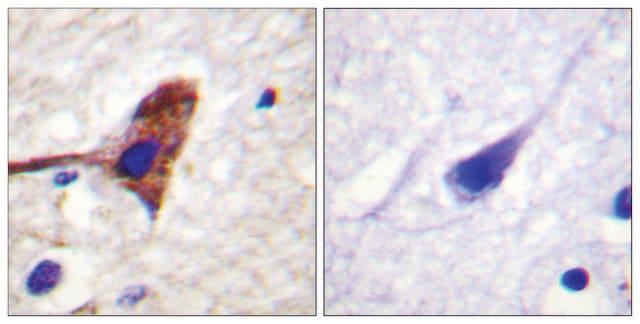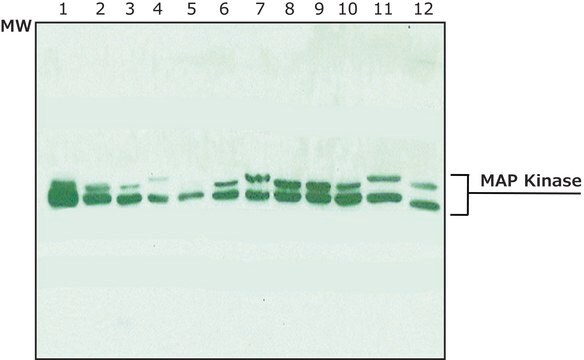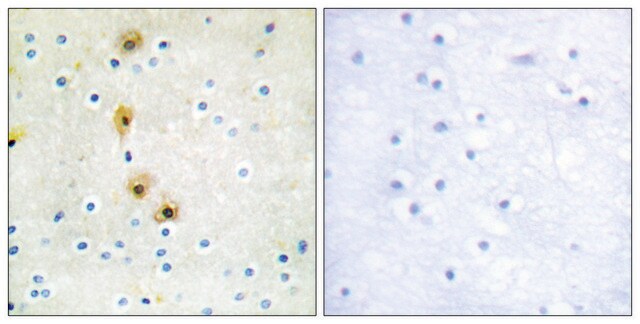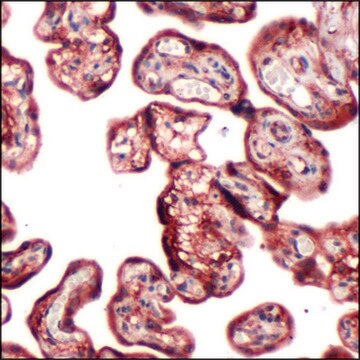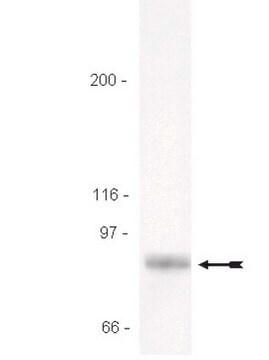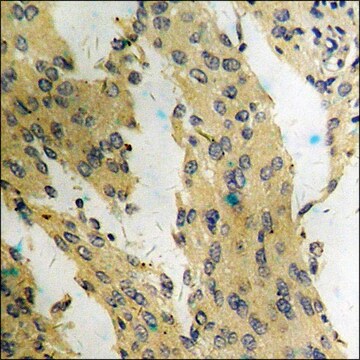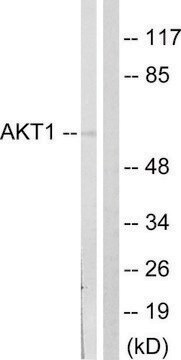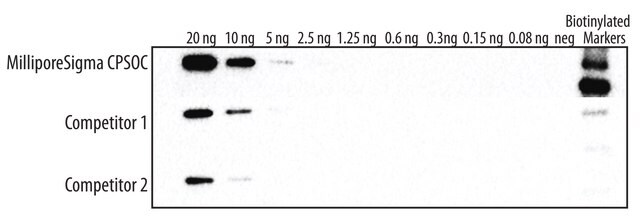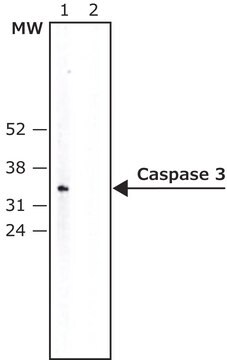Key Documents
T2949
Anti-mTOR antibody produced in rabbit
1.0-1.5 mg/mL, affinity isolated antibody, buffered aqueous solution
Synonim(y):
Anti-FKBP-12 rapamycin associated protein, Anti-FRAP, Anti-RAFT, Anti-SEP
About This Item
Polecane produkty
pochodzenie biologiczne
rabbit
białko sprzężone
unconjugated
forma przeciwciała
affinity isolated antibody
rodzaj przeciwciała
primary antibodies
klon
polyclonal
Postać
buffered aqueous solution
masa cząsteczkowa
antigen 289 kDa
reaktywność gatunkowa
rat, human, mouse
stężenie
1.0-1.5 mg/mL
metody
immunoprecipitation (IP): 1.0-1.5 μg using 300 μg RIPA extract of human transformed kidney HEK 293T cells
microarray: suitable
western blot: 1:2,000 using whole extracts of rat brain tissue
western blot: 1:500 using mouse brain tissue
Warunki transportu
dry ice
temp. przechowywania
−20°C
docelowa modyfikacja potranslacyjna
unmodified
informacje o genach
human ... FRAP1(2475)
mouse ... Frap1(56717)
rat ... Frap1(56718)
Opis ogólny
Specyficzność
Immunogen
Zastosowanie
Western Blotting (1 paper)
Postać fizyczna
Oświadczenie o zrzeczeniu się odpowiedzialności
Nie możesz znaleźć właściwego produktu?
Wypróbuj nasz Narzędzie selektora produktów.
polecane
Kod klasy składowania
10 - Combustible liquids
Klasa zagrożenia wodnego (WGK)
WGK 3
Temperatura zapłonu (°F)
Not applicable
Temperatura zapłonu (°C)
Not applicable
Certyfikaty analizy (CoA)
Poszukaj Certyfikaty analizy (CoA), wpisując numer partii/serii produktów. Numery serii i partii można znaleźć na etykiecie produktu po słowach „seria” lub „partia”.
Masz już ten produkt?
Dokumenty związane z niedawno zakupionymi produktami zostały zamieszczone w Bibliotece dokumentów.
Klienci oglądali również te produkty
Produkty
We present an article about how proliferating cells require the biosynthesis of structural components for biomass production and for genomic replication.
Cancer stem cell media, spheroid plates and cancer stem cell markers to culture and characterize CSC populations.
Nasz zespół naukowców ma doświadczenie we wszystkich obszarach badań, w tym w naukach przyrodniczych, materiałoznawstwie, syntezie chemicznej, chromatografii, analityce i wielu innych dziedzinach.
Skontaktuj się z zespołem ds. pomocy technicznej